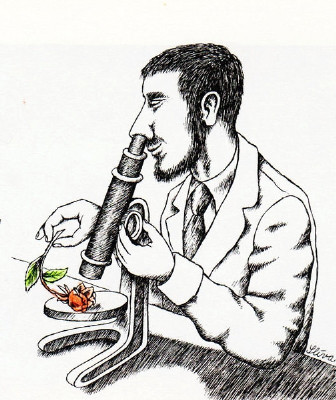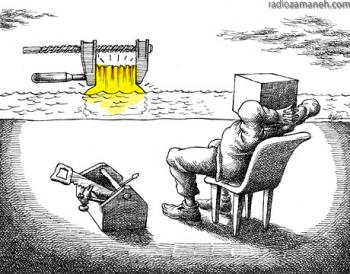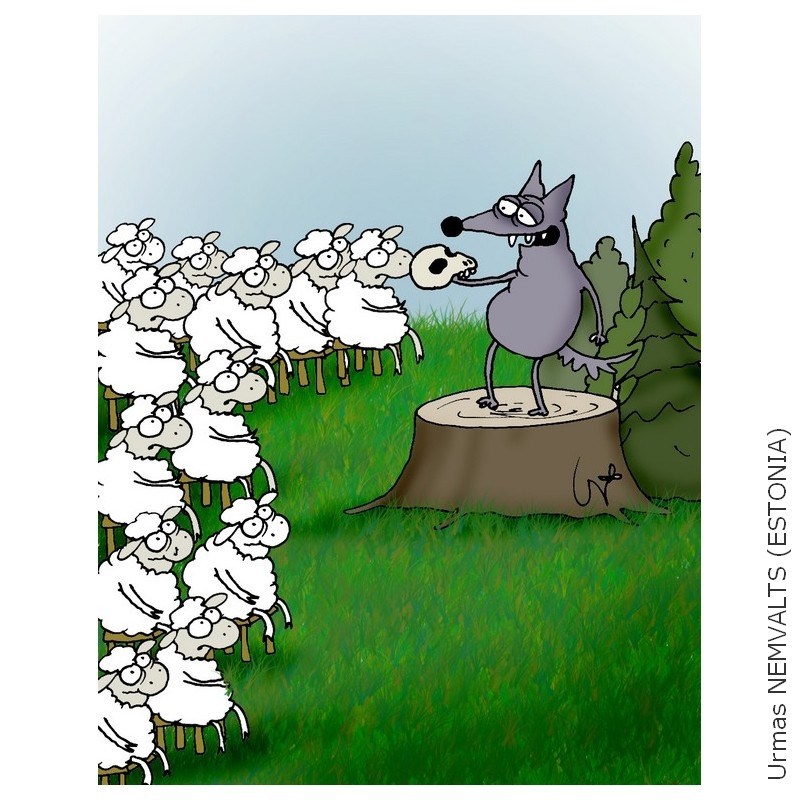ishte bere komplet i abonuar
Ne fakt te tere ata ngjanin me te abonuar ne ate ceremoni, si nje kaste.
Vdekte cilesia!
ishte bere komplet i abonuar
Ne fakt te tere ata ngjanin me te abonuar ne ate ceremoni, si nje kaste.
Vdekte cilesia!
Keshtu eshte dhe ne France (vend, i cili, gjithsesi perpiqet “tek-tuk” te prodhoje nje kinema qe nganjehere i iken cilesise, dhe i afrohet lirise).
Te premten qe shkoi, ceremonia e Césars (Oscars francezë) ishte pothuaj e njejta gje me ate te Hollywoodit (deri dhe në ngjashmerine e filmave te Del Toro-s me ato te Albert Dupontel: te dy, fitues te trofenjve te “Best Director” !!)
E megjithate, mjafton nje moment vertetesie per te mbajtur gjalle shpresen: marrja e trofeut te “Aktores me te mire” nga ana e Jeanne Balibar, per rolin e saj ne filmin “Barbara” (Barbara ka qene kengetarja-interpretuese me e madhe e muzikes se lehte franceze, pak a shume si Mina italiane), duke ofruar 5 minuta emocioni te vertete, ose siç thoja me lart, shpresen se arti nuk ka vdekur (me e bukura eshte se filmi ne te cilin ajo luan, nuk eshte fare biografik, por eshte nje film qe rrefen xhirimin e nje filmi biografik mbi jeten e Barbara-s; e megjithate, spikerja e prezantoi ate si aktoren qe luan rolin e Barbara-s)

Ose siç thote aktorja ne fund te fjales se saj: “Regjizorë ! Beni filma te çmendur, e mos respektoni regjistrat (book of specifications)”
(faire des films de barge sans respecter le cahier des charges)
Faleminderit per kete, qe eshte nje kthim ne “sanity”, qe i ben thirrje te qenit “njeri”
shto qe aktorja-kengetare në fjalë nuk eshte dokushdo 
Stalker, kam idene se ti po ngaterrohesh kot ne shpjegimin e realizmit. Shume e vertete qe filmat e Lynch jane realist ndersa “Stranger things” nuk eshte. Lynch eshte realist ashtu si librat e Isak Asimov apo edhe te J. Swift jane realiste, ndersa letersia e realizmit socialist nuk eshte realiste. Me definicion eshte realist ai art qe pasqyron realisht shpirtin njerezor, pavaresisht vendvendosjes apo trukeve artistike. Per mua p.sh nuk ka liber me realist se sa Odisea apo historia e Adamit dhe Eves me gjarperin dhe Mollen e ndaluar.
Nderkohe qe asgje nuk ishte me surrealiste dhe jashte realitetit te perditshem se sa ceremonia e Oscar dy dite me pare.

“Stranger things” nuk e kam pare (dhe me ç’po konstatoj, eshte seri televizive), keshtu qe nuk mund te kem nje opinion timin pa e pare.
Amà di kete: nje film i mire eshte automatikisht realist, ose me sakte: shenja dalluese e kinemase se vertete eshte realizmi (ne fakt, me teper se per film realist, duhet folur per realizem ne nje film).
Nuk eshte shpikja ime realizmi. Siç thosha me lart, eshte zhvilluar per here te pare nga André Bazin (qe i qendron kritikes se kinemase siç i qendron i Biri te Atit).
Krahasimi me letersine pastaj eshte tjeter gje, por kam frike se nuk qendron sepse letersia eshte shume më pak e manipuluar se kinemaja (nje leter e nje laps duhet - si te thuash). Sigurisht, edhe per te shkruar nje fature elektriku, nje leter dhe nje laps duhet por per fat, letersia ka me mijra vjet tradite dhe eshte shume kollaj e detektueshme qe nje fature elektriku nuk eshte letersi.
Kinemaja çik me shume se 100 vjet i ka, pra shume pak krahasuar me letersine; shto qe eshte jo pak art ‘impure’. Prej nga dhe lehtesia per manipulim
Kur u pat folur per bashkepunimin e Maren Ade dhe Miguel Gomes (kur doli ne drite Toni Erdmann) ke pas thene qe ‘birds of a feather, flock together’…
Edhe aktorja ne fjale ne filmin e Pedro Costes.
Stalker une nuk e di se si e shikon ti kinemane, por per mua kinemaja nuk eshte gje vecse teatri i vjeter grek, shekspirian a me tutje i filmuar per nje audience me te gjere televizive apo kinematografike. Shto ketu dhe mundesite e pafundme per elaborime skenike. Per mua kinemaja ashtu si edhe i gjithe arti tjeter eshte nje Rrefim dhe si i tille mund te jete realist ose jo vetem persa i perket pasqyrimit te realitetit. Fusha ku ti po futesh pastaj eshte shfrytezimi ideologjik i artit, qe eshte krejt tjeter gje. Po nejse shume muhabet i gjate dhe i sterrahur ne diskutime intelektuale per te pranuar ketu nje definicion.
P.S. Kot te pyes, po a ka mundesi ndonje nga administrata ti heqe keto “fotografite” e ketij idiotit?

Deontologjikisht, me shume se me teatrin, ne fakt kinemaja ka te beje me Shadow play (po ashtu, jo pak i zhvilluar ne Greqine e Vjeter) por duke qene se teatri, ne dukje, eshte me i afruari (aktrimi, etj etj), mendja e njeriut shkon tek ai.
Megjithate, per mua, kinemaja (ajo e mira, sigurisht!) eshte më afer nga te gjitha me pikturen meqe, njesoj si ajo, pershfaq te padukshmen
ps: do perpiqem pak me poshte, nepermjet dy-tre shembujsh konkrete, te shpjegoj se ç’dua te them me ‘realizem ne kinema’
Ontologjikisht sinemaja, me shume se me “imazhin” e financuar nga biznesi, ka te beje me drogen. Meqe ne jeten reale ndjehemi si gjeniale te pakuptuar nga te tjeret (megjithse kemi lexu libra), krejt bosh, krejt te kote ne nje univers te kote dhe absurd (gje per te cilen ankohet edhe Shekspiri ne teater), atehere çër t’bojm, çër t’bojm, hajt po shkojm n’kinemo ngushellohemi te droguar me “imazhin” e Bela Karr - kunder biznesit amerikan qe financon “imazhin” e rrezimit te World Trade Center - duke ngrene kokoshka me coca cola.
Kam idene qe prape po ngaterron tekniken me rrefimin. Teknika eshte mjeti i pasqyrimit te rrfimit dhe ketu kinemaja sjell nje risi prej nga rrjedh dhe ngjashmeria me shadow play, ne transmetim sidoqofte jo ne krijimin teknik (camera etj qe nuk ekzistonin tek shadow play ashtu si projektimi). Ajo qe e bashkon kinemane me teatrin eshte loja aktoriale dhe ndertimi struktural i subjektit i bazuar ne skript, ku dialogjet (aktoret) jane te percaktuar ndersa kompozimi skenik pergjithesisht i besohet nje stafi te caktuar, ndaj dhe detyra nderlidhese e regjisorit. Sigurisht qe gjerat nuk jane kaq te drunjta, por konceptualisht besoj me kupton c’dua te them.
@STALKER a mund ta gjesh ne arkivin e 2009 (mos gaboj) debatin intensiv mbi c’eshte kinemaja, me anetaresine e peshkut…
Une s’e gjej dot me ndyshimin e ppu se vjeter.
E kuptoj insistimin tënd për rrefimin (narracionin) por ajo eshte dicka e padiskutueshme : të gjithe artet, qe prej ekzistences se tyre, narrojne (rrefejne).
Jo jo, loja aktoriale, skripti etj etj nuk janë determinues për kinemane. Eshte imazhi. Kinemaja eshte imazh (dhe zë : pas 1930-s).
Por ‘Korriku’ ka të drejte: ketu në peshk, kemi tashme diskutuar për “ç’eshte kinemaja” (kemi cituar jo pak Tarkovskin, Godard, Deleuze etj etj qe kanë teorizuar jo pak për kete teme).
ju keni fol per sinemane ne Peshk si grup gjimanzistesh te lyer me parfum Patrioti, pa prezencen e urines se te Modhit  :
:
Fotografia dhe sinemaja, si mediumet me avangarde per kohen, kane trasformuar kembe e koke te gjitha artet e meparshme, te cilat nga katrore u trasformuan ne te rrumbullakta, biles sferike nepermjet mediumit te sinemase. Fotografia dhe sinemaja kane treguar se progresi i artit mund te shprehet edhe si progres paralel i mediumit, qe do te thote ontologjikisht dhe deontologjikisht: origjinalisht materia eshte po aq e shenjte dhe po aq me vlere sa edhe shpirti. Dhe kete çuditerisht e kuptoi Lenini lidhur me sinemane, qe ishte nje koqepordhe nga pikpamja artistike moderne, pyke ne diell. Kjo eshte shum treguese per rendesine e pozites nga shihen gjerat, pra koqepordhat e vertete ishin intelektualet e shquar qe zgrryheshin neper kenetat e studiove, akademive, universiteteve - i Modhi
Stalker, nese nuk i ve nje pelqim ketij komenti, atehere harram buken e fuksave te Kinostudjos Shqiperia e Re.
E thene pak me gjate
A Brief History of Hollywood Dramaturgy and
Modern Screenplay Structure
A journey over time and borders
by Mikael Colville-Andersen
Hollywood’s love of a rigid structure in screenplay writing did not materialise out of thin air. Where did all those plot points, mid-points, three-act structures come from? The journey is an interesting one. It is a tale that wanders over time and borders.
While most dramaturgy stems from ancient Greece, there is a more specific track to follow to arrive at modern American screenwriting.
The seeds were sown in France. Alexandre Dumas (Dumas pere) - 1802-1870 was a prolific writer of literature and plays. He got the idea of employing 12 writers to help him get all his ideas down on paper and, therefore, was party to the first “writing factory”.
His son, Alexandre Dumas (Dumas fils), continued the concept and started a wave of so-called “Boulevard comedies” in Paris. They encompassed an attempt at a finding a common structural direction.
We move north to Norway where Henrik Ibsen (1828-1906), Norway s greatest writer, was profoundly influenced by both Dumas Pére and Dumas Fils - both creatively and structurally. Together with Bjoernstjerne Bjoernsen, another Norwegian writer, they worked together on structuring plays into a form we recognise today.
August Strindberg (1849-1912), Sweden s greatest writer, was influenced by the direction being taken across the border. He, in turn, influenced Anton Chekhov (1860-1904) to the east in Russia.
All these northern developments were closely followed by an Englishman, William Archer. He was so taken with the nordic writers and their work that he taught himself the Scandinavian languages, in order to read the plays and novels in their original form. Around 1900, Archer published a book called “Playmaking”. In it, he polished up the various points and presented a playwriting structure that was clear and concise.
Sailing across the Atlantic, we make a stop at Yale, where George Pierce Baker (1866-1935) was teaching theatre. He took Archer s book to heart and made further adjustments in finding the optimal playwriting structure.
Among his students was Eugene O Neill (1888-1953), one of the most respected writers in America s literature history. O Neill learned a great deal from Pierce Baker and ended up starting his own theatre group, called the Provincetown Players. They were an experimental bunch. Their influence on travelling theatre groups who toured the countryside was strong. Through their work, the movement towards a common dramaturgy, started a century before in Europe, was nearing completion.
They implemented the same structure in their travelling shows, in order to present different stories within the same framework, therefore making them more accessible to the audience.
With the advent of cinema and the rise of film as an art form, the movement towards a broad-reaching dramaturgical structure makes a quick stop back in Europe, in Copenhagen, at Nordisk Film Studios.
Nordisk, the oldest film company in the world today, controlled the lion’s share of the world s film market in the years between 1906-1914. The Golden Age of Danish Cinema. Films were cranked out at a dizzying pace using, more or less, a screenwriting framework laid out by all the aforementioned people.
After the First World War, Hollywood gained strength and, no doubt influenced by the factory system laid out in Copenhagen by Nordisk, started the move towards the domination we know today.
The dramaturgical structure inherent in most Hollywood films was fine-tuned over the years until reaching the point at which we now find ourselves: The three-act structure, the plot points, the time-frame and suchlike pandemonium.
© Mikael Colville-Andersen 2006 - 2011
